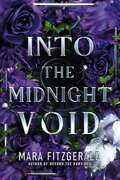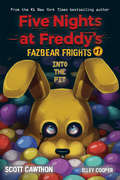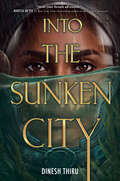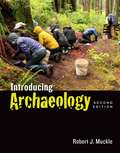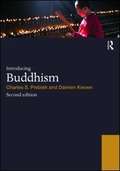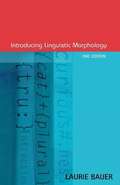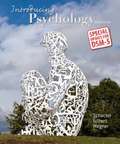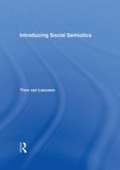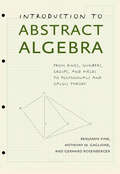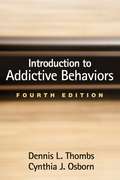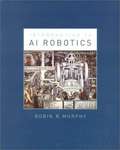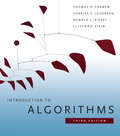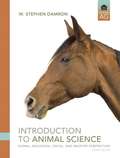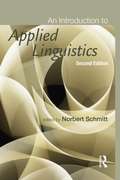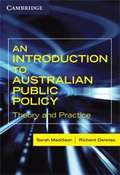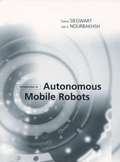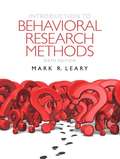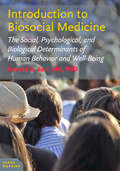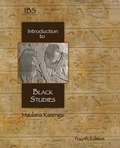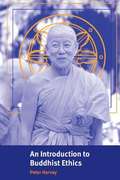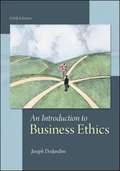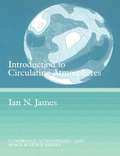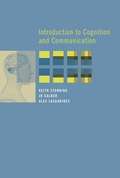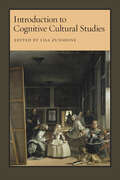- Table View
- List View
Into the Midnight Void (Beyond the Ruby Veil #2)
by Mara FitzgeraldFans of Holly Black and Kendare Blake will obsess over the conclusion to this deliciously dark YA fantasy duology!Emanuela has finally gotten what she's always wanted. Since escaping her catacomb prison, she's become the supreme ruler of everything under the veils. Finally, she has the power to throw aside senseless, old traditions and run things exactly the way they should be. But when cracks in her magic start to show, Emanuela begrudgingly allies herself with her enemies, including her frustratingly alluring archnemesis, Verene. Together, they discover deeper truths about the mysterious blood magic Emanuela and Verene both wield. There is a higher, otherworldly authority outside the veils, and in order to save Occhia and the other realms, Emanuela may just have to rip another crown off someone's head.
Into the Pit: An AFK Book (Five Nights At Freddy's #1)
by Scott Cawthon Elley CooperFive Nights at Freddy's fans won't want to miss this pulse-pounding collection of three novella-length tales that will keep even the bravest player up at night . . .What do you wish for most? It's a question that Oswald, Sarah, and Millie think they know the answer to. Oswald wishes his summer wasn't so boring, Sarah wishes to be beautiful, and Millie wishes she could just disappear from the face of the earth. But in the twisted world of Five Nights at Freddy's, their hearts' deepest desires have an unexpected cost.In this volume, Five Nights at Freddy's creator Scott Cawthon spins three sinister novella-length stories from different corners of his series' canon, featuring cover art from fan-favorite artist LadyFiszi. Readers beware: This collection of terrifying tales is enough to unsettle even the most hardened Five Nights at Freddy's fans.
Into the Sunken City
by Dinesh Thiru"Steal-your-breath adventure." —Marissa Meyer, #1 New York Times bestselling author of the Lunar ChroniclesPerfect for fans of Fable and House of Salt and Sorrows, this spectacular YA fantasy adventure debut is like nothing else, featuring a unique twist on Treasure Island, a magnetic second chance romance, and a thrilling heist where the reward is great—but the risks are even greater.In the slowly sinking city of Coconino, Arizona, the days are long, the money is tight, and the rain never stops.For Jin Haldar, this life is nothing new—ever since her father died in a diving accident, she’s barely made ends meet for her and her younger sister, Thara.Enter Bhili: a drifter who offers Jin and Thara the score of a lifetime—a massive stash of gold hidden in the sunken ruins of Las Vegas.Jin knows it’s too dangerous. She stopped diving after her father’s accident. But when her sister decides to go, Jin’s left with only one choice: to go with her.A ragtag crew is assembled—including Jin’s annoyingly hot ex-boyfriend. From there, a high-stakes heist ensues that’s beyond even Jin’s wildest fears. Crumbling ruins, sea beasts, corsairs, and a mysterious figure named João Silva all lie in wait. To survive, Jin will have to do what she promised herself she’d never do again: dive.
Introducing Archaeology (Second Edition)
by Robert J. MuckleIntroducing Archaeology offers a lively alternative to many other texts. While covering traditional elements of archaeology, including methods and prehistory, the book also integrates the key principles of curriculum reform for the twenty-first century, as outlined by the Society for American Archaeology. The second edition highlights recent developments in the field and includes a new chapter on archaeology beyond mainstream academia. It also integrates more examples from popular culture, including mummies, tattoos, pirates, and global warming. What results is a surprisingly fresh and contemporary take on archaeology, one that situates the discipline within, but also beyond, the academy. Introducing Archaeology is accompanied by a free website with chapter-by-chapter resources for students, including study questions. Visit www. introducingarchaeology. com. Instructor ancillaries for Introducing Archaeology include an instructor's manual, PowerPoint slides, and a testbank.
Introducing Buddhism
by Charles S. Prebish Damien KeownIntroducing Buddhismis the ideal resource for all students beginning the study of this fascinating religious tradition. It explains the religion's key teachings and traces its historical development and geographical spread of from its foundations up to present day. Charles S. Prebish and Damien Keown, two of today's leading Buddhist scholars, devote a chapter each to the major regions where Buddhism has flourished - India, South-east Asia, East Asia and Tibet. In addition, contemporary concerns are discussed, including important and relevant topics such as Engaged Buddhism, Buddhist Ethics, Buddhism and the Western World and Meditation. This new edition includes more material on the different schools of Buddhism including explanations in graphic form, monastic life, popular religion, Buddhist ethics, ritual, the Bodhisattva Path, the Jatakas, the transmission of Buddhism, and class, gender and race. Introducing Buddhismincludes illustrations, extracts from original sources, summary boxes, questions for discussion, suggestions for further reading and a companion website at www. routledge. com/textbooks/9780415550017 Charles S. Prebishis Charles Redd Chair of Religious Studies at Utah State University. Damien Keownis Professor of Buddhist Ethics at Goldsmith's College, University of London. They are the editors of the Encyclopedia of Buddhism (Routledge, 2007).
Introducing Linguistic Morphology
by Laurie BauerA newly expanded and updated edition of one of the best-selling introductions to linguistic morphology -- the study and description of word formations in languages -- that deals with inflection, derivation, and compounding, the system of word-forming elements and processes in a language. Basic concepts are introduced, with an abundance of examples from a range of familiar and exotic languages, followed by a discussion of, among other topics, the definition of word-form, productivity, inflection versus derivation, and the position of morphology to phonology -- the science of speech sounds, especially the history and theory of sound changes in a language. Along with two new chapters discussing morphology and the brain and how morphology arises, changes, and disappears, this new edition includes exercises and a glossary of key terms.
Introducing Psychology With Updates On DSM-5
by Daniel L. Schacter Daniel T. Gilbert Daniel M. WegnerA great read is just the beginning. . . Instructor and student evaluations from coast to coast attest to the Dans' captivating writing These award-winning bestselling authors know how to enthrall students with the subject they love best--psychology But in the new edition of Introducing Psychology, they go even further to ensure that students won't commit one of the seven sins of memory--forgetting what they just read Special Cue Questions and Critical Thinking questions give students the opportunity to process psychological concepts and aid their understanding and memory And if you've ever heard someone parrot a widespread misconception, you'll welcome the new Changing Minds questions, short scenarios which ask students to confront common misunderstandings of psychological phenomena Now the book that students love to read is as unforgettable as ever! DSM 5 Updates Available for Fall 2014 classes, this update version features new content from the Dans in response to the release of the DSM-5. This new content is integrated into the text without changing pagination or the structure of the chapters. A special DSM 5 Supplement by the Matthew Nock, new coauthor with the Dans of Psychology, Third Edition, is available for Fall 2013 and Spring and Summer 2014 courses. View the Page-Referenced Guide to the DSM-5 updates for Psychology.
Introducing Social Semiotics: An Introductory Textbook
by Theo Van LeeuwenSocial Semiotics is a lively introduction to the ways in which different aspects of modern society combine to create meaning. These "semiotic resources" surrounding us include obvious modes of communication such as language, gesture, images and music, but also less obvious ones such as food, dress and everyday objects, all of which carry cultural value and significance. Social Semiotics uses a wide variety of texts including photographs, adverts, magazine pages and film stills to explain how meaning is created through complex semiotic interactions. Practical exercises and examples--as wide ranging as furniture arrangements in public places, advertising jingles, photojournalism, and the rhythm of a rapper's speech--provide readers with the knowledge and skills they need to be able to analyze and also produce successful multimodal texts and designs. The book traces the development of semiotic resources through particular channels such as the history of the press and advertising; and explores how and why these resources change over time, for reasons such as advancing technology. Featuring a full glossary of terms, exercises, discussion points and suggestions for further reading, Social Semiotics makes concrete the complexities of meaning-making and is essential reading for anyone interested in how communication works.
Introducing World Religions
by Victoria Kennick UrubshurowIntroducing World Religions offers an exciting new approach to the study of world religions. It explores the main religions of both East and West, situating them in a cross-cultural context and using a powerful dramatic metaphor to bring them alive for students. Ideal for one-semester or modular introductory survey courses, Introducing World Religions will be essential reading for any student of religions, worldwide.
Introduction to Abstract Algebra: From Rings, Numbers, Groups, and Fields to Polynomials and Galois Theory
by Benjamin Fine Anthony M. Gaglione Gerhard RosenbergerA new approach to abstract algebra that eases student anxieties by building on fundamentals.Introduction to Abstract Algebra presents a breakthrough approach to teaching one of math's most intimidating concepts. Avoiding the pitfalls common in the standard textbooks, Benjamin Fine, Anthony M. Gaglione, and Gerhard Rosenberger set a pace that allows beginner-level students to follow the progression from familiar topics such as rings, numbers, and groups to more difficult concepts. Classroom tested and revised until students achieved consistent, positive results, this textbook is designed to keep students focused as they learn complex topics. Fine, Gaglione, and Rosenberger's clear explanations prevent students from getting lost as they move deeper and deeper into areas such as abelian groups, fields, and Galois theory. This textbook will help bring about the day when abstract algebra no longer creates intense anxiety but instead challenges students to fully grasp the meaning and power of the approach. Topics covered include:• Rings• Integral domains• The fundamental theorem of arithmetic• Fields• Groups• Lagrange's theorem• Isomorphism theorems for groups• Fundamental theorem of finite abelian groups• The simplicity of An for n5• Sylow theorems• The Jordan-Hölder theorem• Ring isomorphism theorems• Euclidean domains• Principal ideal domains• The fundamental theorem of algebra• Vector spaces• Algebras• Field extensions: algebraic and transcendental• The fundamental theorem of Galois theory• The insolvability of the quintic
Introduction to Addictive Behaviors (4th Edition)
by Dennis L. Thombs Cynthia J. OsbornThis widely adopted text introduces students and practitioners to major contemporary models of addiction. Assuming no prior knowledge in the field, the book shows how theory and research can offer a roadmap for effective intervention. It presents multiple perspectives on the causes and mechanisms of substance use problems, reviews their strengths and limitations, and examines their implications for helping people change their behavior. Evidence-based treatment and prevention strategies are described.Pedagogical Features Include:*Accessible style and clear organization.*Concise end-of-chapter summaries.*Review questions in every chapter.New to This Edition*The latest research on prevention and treatment, including current data and revised discussions of genetic influences, family treatment models, and many other topics.*Updated for DSM-5.*Chapter on behavioral addictions.*Chapter on promoting motivation and autonomy.*Chapter on evidence-based practice.
Introduction to AI Robotics
by Robin R. MurphyThis text covers all the material needed to understand the principles behind the AI approach to robotics and to program an artificially intelligent robot for applications involving sensing, navigation, planning, and uncertainty. Robin Murphy is extremely effective at combining theoretical and practical rigor with a light narrative touch. In the overview, for example, she touches upon anthropomorphic robots from classic films and science fiction stories before delving into the nuts and bolts of organizing intelligence in robots. Following the overview, Murphy contrasts AI and engineering approaches and discusses what she calls the three paradigms of AI robotics: hierarchical, reactive, and hybrid deliberative/reactive. Later chapters explore multiagent scenarios, navigation and path-planning for mobile robots, and the basics of computer vision and range sensing. Each chapter includes objectives, review questions, and exercises. Many chapters contain one or more case studies showing how the concepts were implemented on real robots. Murphy, who is well known for her classroom teaching, conveys the intellectual adventure of mastering complex theoretical and technical material.
Introduction to Algorithms, third edition (The\mit Press Ser.)
by Thomas H. Cormen Charles E. Leiserson Ronald L. Rivest Clifford SteinThe latest edition of the essential text and professional reference, with substantial new material on such topics as vEB trees, multithreaded algorithms, dynamic programming, and edge-based flow.Some books on algorithms are rigorous but incomplete; others cover masses of material but lack rigor. Introduction to Algorithms uniquely combines rigor and comprehensiveness. The book covers a broad range of algorithms in depth, yet makes their design and analysis accessible to all levels of readers. Each chapter is relatively self-contained and can be used as a unit of study. The algorithms are described in English and in a pseudocode designed to be readable by anyone who has done a little programming. The explanations have been kept elementary without sacrificing depth of coverage or mathematical rigor.The first edition became a widely used text in universities worldwide as well as the standard reference for professionals. The second edition featured new chapters on the role of algorithms, probabilistic analysis and randomized algorithms, and linear programming. The third edition has been revised and updated throughout. It includes two completely new chapters, on van Emde Boas trees and multithreaded algorithms, substantial additions to the chapter on recurrence (now called “Divide-and-Conquer”), and an appendix on matrices. It features improved treatment of dynamic programming and greedy algorithms and a new notion of edge-based flow in the material on flow networks. Many exercises and problems have been added for this edition. The international paperback edition is no longer available; the hardcover is available worldwide.
Introduction to Animal Science: Global, Biological, Social, and Industry Perspectives (Fourth Edition)
by W. Stephen DamronIntroduction to Animal Science: Global, Biological, Social and Industry Perspectives, 4efeatures the most comprehensive, up-to-date coverage of the traditional disciplines that are so essential to a solid foundation in Animal Science: nutrition, digestion, feeds, genetics, reproduction, disease, and animal behavior. Species-focused chapters include the major species (horse, dairy cattle, beef cattle, sheep, goat, poultry, and swine) and the minor species (aquaculture, pets/companion animals, the lamoids, and rabbits).
An Introduction to Applied Linguistics (Second Edition)
by Norbert SchmittAn Introduction to Applied Linguistics, Second Edition provides a complete, authoritative and up-to-date overview of the state of the field. Each of the 15 chapters offers an extended survey of a central element of Applied Linguistics and is co-authored by two leading international specialists, thus ensuring a full and balanced treatment of the topic covered. The book is divided into three sections: a description of language and language use; essential areas of enquiry; and the four skills and testing. An Introductory chapter familiarises readers with key issues and recurrent themes whilst hands-on activities and further reading sections for each chapter encourage practical analysis and wider reading. For this new edition, each chapter has been fully revised in line with new research and thinking in Applied Linguistics. With its accessible style, broad coverage and practical focus, this book is ideal for students of applied linguistics, TESOL, and second language pedagogy as well as practicing teachers and researchers wishing to update their knowledge.
An Introduction To Australian Public Policy
by Sarah Maddison Richard DennissAn Introduction to Australian Public Policy: Theory and Practice is the first book to comprehensively address both the theoretical and practical aspects of policy making in Australia. Written in an accessible style, this text is designed to introduce students to the real world challenges and skills involved in working in a range of policy roles. Drawing on their own experiences, the authors ground public policy theory in a number of key controversies to illustrate the contestable nature of the policy process. Each chapter features case studies that outline contemporary policy issues, such as the deregulation of the financial system, 'Knowledge Nation', paid maternity leave, and the Northern Territory intervention. Including practical exercises on how to write policy briefs and media releases, this book is essential reading for anyone who needs to know how public policy is developed in Australia.
Introduction to Autonomous Mobile Robots
by Roland Siegwart Illah Reza NourbakhshMobile robots range from the teleoperated Sojourner on the Mars Pathfinder mission to cleaning robots in the Paris Metro. Introduction to Autonomous Mobile Robots offers students and other interested readers an overview of the technology of mobility--the mechanisms that allow a mobile robot to move through a real world environment to perform its tasks--including locomotion, sensing, localization, and motion planning. It discusses all facets of mobile robotics, including hardware design, wheel design, kinematics analysis, sensors and perception, localization, mapping, and robot control architectures. The design of any successful robot involves the integration of many different disciplines, among them kinematics, signal analysis, information theory, artificial intelligence, and probability theory. Reflecting this, the book presents the techniques and technology that enable mobility in a series of interacting modules. Each chapter covers a different aspect of mobility, as the book moves from low-level to high-level details. The first two chapters explore low-level locomotory ability, examining robots' wheels and legs and the principles of kinematics. This is followed by an in-depth view of perception, including descriptions of many "off-the-shelf" sensors and an analysis of the interpretation of sensed data. The final two chapters consider the higher-level challenges of localization and cognition, discussing successful localization strategies, autonomous mapping, and navigation competence. Bringing together all aspects of mobile robotics into one volume, Introduction to Autonomous Mobile Robots can serve as a textbook for coursework or a working tool for beginners in the field.
Introduction to Behavioral Research Methods (6th Edition)
by Mark R. LearyIntroduction to Behavioral Research Methods incorporates the four basic approaches to behavioral research (descriptive research, correlational research, experimental research, and quasi-experimental research), and shows students how to conceptualize questions, measure variables, design studies, and analyze data. Chapters on research ethics and scientific writing (including the most recent version of APA style) round out the book. Throughout each chapter, boxes on "Developing Your Research Skills" and "Behavioral Research Case Study" provide practical examples and pique student interest. Teaching & Learning Experience Personalize Learning - MySearchLab delivers proven results in helping students succeed, provides engaging experiences that personalize learning, and comes from a trusted partner with educational expertise and a deep commitment to helping students and instructors achieve their goals. Improve Critical Thinking -- New up-to-date Behavioral Research Case Studies help students apply research to practice. Engage Students -- The text is designed to make research methods understandable, useful, and interesting for students. Explore Research -- Real research, tidbits about the lives of famous researchers, and intriguing controversies that have arisen in behavioral science are included. A lab manual in MySearchLab helps engage students in the research process. Support Instructors -- MyTest, PowerPoints, and an instructor's manual offer additional support for instructors. Note: MySearchLab with eText does not come automatically packaged with this text. To purchase MySearchLab with eText, please visit: www.mysearchlab.com or you can purchase a valuepack of the text + MySearchLab with eText (at no additional cost). VP: 0205196284 / 9780205196289
Introduction to Biosocial Medicine: The Social, Psychological, and Biological Determinants of Human Behavior and Well-Being
by Donald A. BarrUnderstanding human behavior is essential if medical students and doctors are to provide more effective health care.While 40 percent of premature deaths in the United States can be attributed to such dangerous behaviors as smoking, overeating, inactivity, and drug or alcohol use, medical education has generally failed to address how these behaviors are influenced by social forces. This new textbook from Dr. Donald A. Barr was designed in response to the growing recognition that physicians need to understand the biosocial sciences behind human behavior in order to be effective practitioners. Introduction to Biosocial Medicine explains the determinants of human behavior and the overwhelming impact of behavior on health. Drawing on both recent and historical research, the book combines the study of the biology of humans with the social and psychological aspects of human behavior. Dr. Barr, a sociologist as well as physician, illustrates how the biology of neurons, the intricacies of the human mind, and the power of broad social forces all influence individual perceptions and responses. Addressing the enormous potential of interventions from medical and public health professionals to alter these patterns of human behavior over time, Introduction to Biosocial Medicine brings necessary depth and perspective to medical training and education.
Introduction to Black Studies (4th Edition)
by Maulana KarengaA comprehensive textbook that covers Black/African American studies across a variety of academic disciplines.
An Introduction to Buddhist Ethics: Foundations, Values and Issues
by Peter HarveyThis systematic introduction to Buddhist ethics is aimed at anyone interested in Buddhism, including students, scholars and general readers. Peter Harvey is the author of the acclaimed Introduction to Buddhism (Cambridge, 1990), and his new book is written in a clear style, assuming no prior knowledge. At the same time it develops a careful, probing analysis of the nature and practical dynamics of Buddhist ethics in both its unifying themes and in the particularities of different Buddhist traditions. The book applies Buddhist ethics to a range of issues of contemporary concern: humanity's relationship with the rest of nature; economics; war and peace; euthanasia; abortion; the status of women; and homosexuality. Professor Harvey draws on texts of the main Buddhist traditions, and on historical and contemporary accounts of the behaviour of Buddhists, to describe existing Buddhist ethics, to assess different views within it, and to extend its application into new areas.
An Introduction to Business Ethics, 5th Edition
by Joseph DesjardinsSince its inception, An Introduction to Business Ethics by Joseph DesJardins has been a cutting-edge resource for the business ethics course. DesJardins’ unique multidisciplinary approach offers critical analysis and integrates the perspective of philosophy with management, law, economics, and public policy, providing a clear, concise, yet reasonably comprehensive introductory survey of the ethical choices available to us in business.
Introduction to Circulating Atmospheres
by Alexander J. Dessler John T. Houghton Michael J. Rycroft Ian N. JamesThis book gives an account of the modern view of the global circulation of the atmosphere. It brings the observed nature of the circulation together with theories and simple models of the mechanisms which drive it. Early chapters concentrate on the classical view of the global circulation, on the processes which generate atmospheric motions and on the dynamical constraints which modify them. Later chapters develop more recent themes including low frequency variability and the circulations of other planetary atmospheres. The book will be of interest to advanced students and researchers who wish for an introduction to the subject before engaging with the original scientific literature. The book is copiously illustrated, and includes many results of diagnostic and modeling studies. Each chapter includes a set of problems and bibliographical notes.
Introduction to Cognition and Communication
by Keith Stenning Alex Lascarides Jo CalderThis introduction to the interdisciplinary study of cognition takes the novel approach of bringing several disciplines to bear on the subject of communication. Using the perspectives of linguistics, logic, AI, philosophy, and psychology--the component fields of cognitive science--to explore topics in human communication in depth, the book shows readers and students from any background how these disciplines developed their distinctive views, and how those views interact. The book introduces some sample phenomena of human communication that illustrate the approach of cognitive science in understanding the mind, and then considers theoretical issues, including the relation of logic and computation and the concept of representation. It describes the development of a model of natural language and explores the link between an utterance and its meaning and how this can be described in a formal way on the basis of recent advances in AI research. It looks at communication employing graphical messages and the similarities and differences between language and diagrams. Finally, the book considers some general philosophical critiques of computational models of mind. The book can be used at a number of different levels. A glossary, suggestions for further reading, and a Web site with multiple-choice questions are provided for nonspecialist students; advanced students can supplement the material with readings that take the topics into greater depth.
Introduction to Cognitive Cultural Studies
by Lisa ZunshineDrawing on the explosion of academic and public interest in cognitive science in the past two decades, this volume features articles that combine literary and cultural analysis with insights from neuroscience, cognitive evolutionary psychology and anthropology, and cognitive linguistics. Lisa Zunshine’s introduction provides a broad overview of the field. The essays that follow are organized into four parts that explore developments in literary universals, cognitive historicism, cognitive narratology, and cognitive approaches in dialogue with other theoretical approaches, such as postcolonial studies, ecocriticism, aesthetics, and poststructuralism. Introduction to Cognitive Cultural Studies provides readers with grounding in several major areas of cognitive science, applies insights from cognitive science to cultural representations, and recognizes the cognitive approach’s commitment to seeking common ground with existing literary-theoretical paradigms. This book is ideal for graduate courses and seminars devoted to cognitive approaches to cultural studies and literary criticism.Contributors: Mary Thomas Crane, Nancy Easterlin, David Herman, Patrick Colm Hogan, Bruce McConachie, Alan Palmer, Alan Richardson, Ellen Spolsky, G. Gabrielle Starr, Blakey Vermeule, Lisa Zunshine
